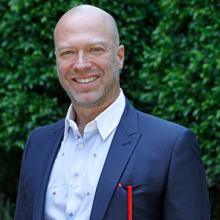Building a green future

Green is the new black with investors looking to play their part in fighting climate change ? all while making a hot profit. The real estate sector is no different discovers Michael Fischer, who analyses how green property can also be an investment worth making
Socially responsible investing is experiencing robust growth across the world according to the Washington DC-based Social Investment Forum, and one of the main reasons is growing concern about climate change and its risk for portfolios. Investors are demanding opportunities for environmentally driven businesses and new products are rolling out to meet this demand. Green real estate is one such innovation.
"We see the issue of green building as pervasive across many different impacts related to climate change, and very important in terms of the absolute magnitude," says Jeffrey MacDonagh, a portfolio manager at Domini Social Investments, a mutual fund shop that has been active in SRI for 15 years.
Jonathan Rose Companies in New York has found a niche approach to green building investment through its private equity Rose Smart Growth Fund, which acquires existing properties, then implements a green strategy to help them improve their environmental performance and generate market returns. The fund made its first acquisition in April 2006 and has $30 million under management. Its high net worth investors include a number of New York real estate families.
"We like to make the argument that the US really builds approximately 1% of its building stock each year; the other 99% exists, and that's where we look to add value," says Tom Loftus, the firm's CFO. The fund takes an existing asset that has tenants, performs a green transformation of the asset to get to qualify for Leadership in Energy and Environmental Design (LEED) certification ? guidelines established in 2000 by the not-for-profit US Green Building Council.
The fund focuses on four types of real estate: office, main street retail, multifamily rental and mixed use of those three. For the fund to invest, says Loftus, a property must be in a walkable or transit-oriented location because, with the push for carbon neutrality, these locations will appreciate at a higher rate than suburban sprawl.
In addition, he says, because the fund is meant to generate market rate returns (it has a target of 12?15% per year) for investors, each investment must have an economic payback. "Usually we're looking for an asset that has been underloved, undermanaged, that has low-hanging fruit where these low tech operationally intensive things can be implemented and provide big economic payback," says Loftus. These "things" include proper insulation, right-sizing the air conditioning system and green cleaning methods. The fund is a long-term investment, so has good synergies for wealthy families. It has a 50-year life, compared with the usual seven to 10-year real estate fund, with liquidity opportunities for the limited
partners every 10 years.
Deborah La Franchi, CEO and president of Strategic Development Solutions, was in at the beginning of the double-bottom-line concept of REITs. The first bottom line is risk-adjusted market rates of return for investors. The second bottom line is to have a positive effect on very low income communities. More recently, a third bottom line has been added, which is the environmental sustainability.
"Five of the funds we're building around the country right now all have the third bottom line and we're seeking the properties to be LEED certified," says La Franchi. At present, roughly two dozen managers around the US have raised $20 billion in double-bottom-line funds; a number of these incorporate the environmental bottom line into their prospectuses. SDS has raised $2 billion in these funds. La Franchi acknowledges that the funds' $3 million minimum investment and the logistics of capital calls can make these fund prohibitive for some. The firm has addressed this issue with two innovations.
Through a subsidiary, which manages public equities, SDS has rolled out a line of triple bottom line public equities products designed for higher net worth investors; the minimum investment is $250,000. SDS uses data provided by Innovest, which ranks publicly traded companies globally. The funds look only at companies that are rated A or above in their environmental and social profiles, and then runs each public equity through a rigorous financial analysis (Arbitrage Pricing Technique) to ensure it's a stock SDS wants in the portfolio.
The financial analysis is important, say La Franchi, because many SRI mutual funds underperform relative to benchmarks and have very high fees. "We wanted to create something that's competitive, expected to beat benchmarks, very low fee, not taking soft dollars, and geared for high net worth individuals who want to do the right thing, but also want to retire."
Click here for advice on family versus company ownership.
Click here for advice on divesting your portfolio.
Click here to find out more about investing in luxury property.






